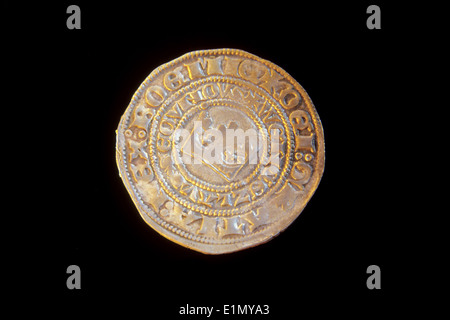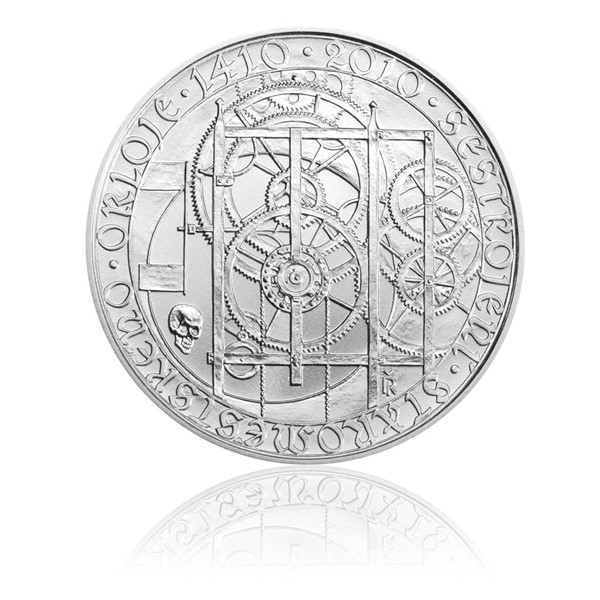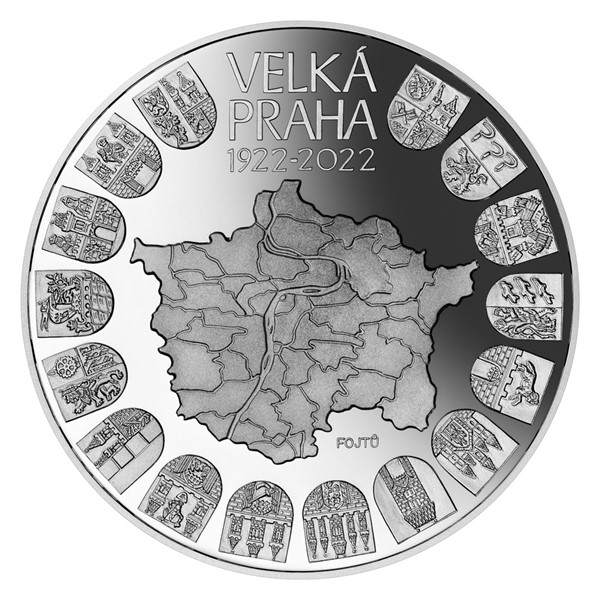Handy Reasons To Drawing Prague Mint Coins
Wiki Article
How Do High-Precision Cnc Machines Form The Design Into A Die Or Master Hub For Striking Gold Medals Or Coins?
CNC machines are employed to design dies and master hubs that are used for the striking of gold medals and coins. Here is a brief outline of the CNC Programming Process.
Computer-Aided Design (CAD) software produces an electronic 3-D model of your coin or medal.
CAM (Computer Aided Manufacturing), software that generates toolpaths, instructions and commands for CNC machines based on 3D models.
The Choice of Die Materials
For CNC machining, either the master hub or die, which is durable and high-quality materials such as brass, steel or alloys that have been hardened will be used. They are able to be able to withstand high-pressure strikes and replicate the design precisely.
Setup and Fixtures
The material of choice is secured to the CNC machine's worktable or vice to ensure precise machining. Fixturing properly is necessary to stop vibrations or movements while the machining.
CNC Machining Process
CNC machines utilize end mills as well as ball mills as cutting tools to carve designs into master hubs or dies.
The CNC machine follows the programmed toolpaths and precisely removes materials from the blank block according to the 3D model's specifications.
Different sizes of cutting tools and types are used to create various depths, contours, and details on the coin or medal.
CNC machines use computer algorithms which control their movements, providing accuracy as low as micrometers.
Finishing & Refinement
Once the initial machining is completed The die hub or master die is honed further.
The surface finish must be polished, smoothed, and crafted by hand or using specialized tools.
Quality Control and Inspection
The master hub, or die, is to be checked using measuring tools such as micrometers or gauges to ensure that it is in line with specifications for the design.
Hardening Treatment (Optional)
The dies may be treated with heat-hardening, surface treatments or both to increase the durability and wear resistance during the striking process.
The precision and power of CNC machines allows for precise reproduction of intricate designs onto dies or master hubs. Die dies are essential tools for making gold medals and coins that have consistency, accuracy and fine detail. Read the top rated CNC Machining Prague Mint gold medals blog examples including silver double eagle coin, 2000 p sacagawea dollar, gold bullion, angel coin, double eagle gold coin, gold piece price, buy coin gold, guardian angel coin, olympic games gold medal, gold price apmex and more.

What Are The Reasons Why The Dies Used Create Gold Coins And Medals Undergo A Process Of Vacuum-Hardening?
Vacuum hardening is a procedure that involves exposing dies high temperature and controlled environment in a furnace. This is a brief overview of how to vacuum harden dies.
To make dies that will be used to create the coins or medals, they need to be clean and free from any residues or contaminants.
Loading in Vacuum Furnace
The dies are then placed inside a special heat-treating chamber which can generate the vacuum.
Evacuation from Air-
The vacuum oven eliminates any air in the chamber making it a clean space free of oxygen as well as other gases. This helps prevent oxidation and guarantees the same heat treatment.
Heating Phase
The furnace must be heated to the temperature needed for hardening the dies. The range of temperature is determined by the material type and the hardening process.
Bathing at high temperatures-
The dies are kept at the elevated temperature for a specific time that allows the material to reach and maintain the desired hardness and the metallurgical structure.
Quenching or Cooling
Utilizing specialized techniques, dies are quickly cooled down or quenched after the soaking process. This rapid cooling process is able to lock in the desired strength and hardness in the steel.
Tempering is an option
In some cases, the process of hardening can be followed by a tempering procedure. Tempering involves heating the dies up until they reach a temperature that is lower to relieve stress while maintaining their toughness.
Quality Control & Inspection
To ensure they meet the standards for hardness and strength, hardened dies go through a thorough inspection and quality control.
Post-Treatment Handling-
Die dies are then polished or coated, and are used to make coins or medals.
The process of vacuum hardening increases the durability and wear resistance and longevity of dies used to create coins or medals. In ensuring a safe and clean environment, this process provides an efficient and consistent method to harden the dies. See the most popular vacuum hardening Prague Mint gold medals more info including gold bars for sale near me, buying silver, 100 grams gold biscuit, st gaudens double eagle, michael phelps medal, bullion gold bars for sale, 5 cent piece, silver double eagle coin, 20 dollar gold coin, 1 4 ounce gold coin and more.

Why Are Dies Hand-Polished To Ensure That Gold Coins And Medals Are Flawlessly Polished?
The process of hand polishing dies is required for production of gold medals and coins. This is due to the fact that it enables better reproduction of fine detail. The smoother the die's surface is, the more accurate quality reproduction of the fine detail and intricate designs on the coins or medals.
A polished die creates coins and medals with more defined edges, sharper relief and clearer details. This enhances the overall aesthetic appeal and the quality of the final product.
Improved wear- polishing reduces friction and wear during the striking process. A smooth die's surface minimizes the chance of imperfections or inconsistencies on the coins or medals struck due to rough surfaces on the die.
Consistency in Striking. Hand-polished dummies give an even strike surface and ensure uniformity throughout the process of coining. Consistency ensures the accuracy and quality of the design on all coins and medals.
Longevity of the DiesDies that are well-polished are less susceptible to damage or wear through the striking process. The dies are more durable and long-lasting, which allows for more strikes to be made without sacrificing the quality.
Precision and Accuracy. Hand polishing lets engravers fine-tune, refine and perfect specific areas on the die. The details will be accurately depicted on the engraved coin or medal. This level contributes to accuracy in the finished product.
Quality Control - Polishing is an integral element of quality control. By inspecting the die before polishing by hand allows for recognition and correction of any inconsistencies or defects before striking.
Surface Finishing - Polishing creates particular surface finishes and textures that enhance visual appeal, or add unique features to struck coins and medals.
Hand polishing gold medals and dies to perfection is crucial for producing high-quality, precisely finished, and pleasing products. It has a significant effect on the final product in terms of appearance, durability and consistency. Have a look at the top rated hand polishing Czechoslovakia gold coins website advice. including silver eagle coins, coin gold bullion, gold bullion bars, coin gold bullion, cost of silver coin, gold coin gold, gold american eagle price, gold silver shops near me, 2000 p sacagawea dollar, purchasing silver bars and more.

How Are Gold Blanks Supplied And Stamped With High Pressure In Coin Presses For Minting?
In the process of coining, blanks of gold are loaded into coin presses under high pressure and then stamped to create completed coins or medals. Here is a quick overview of the steps in loading blanks.
A feeder system is connected to the coin press. The system is loaded with gold blanks that are prepared and tested for quality. The feeder system is responsible for maintaining that blanks are continuously flowed into the coin press.
Feeding Blanks in the Press
The feeder system introduces blanks into the chamber for striking inside the coin press, one at a time. This guarantees the exact placement of each stamping blank.
Alignment and Positioning
In the press, the blanks are aligned and placed in the chamber for striking making sure that they are perfectly aligned and aligned to allow for the stamping process.
Moving Under High Pressure
A coin press applies high pressure to gold blanks by using two dies: one stationary and the second moving. The stationary die makes a negative impression on the design of the coin, while the one that moves is the hammer, which hits the blank.
The die moving transfers the design of the blank onto its surface with considerable force. The dies' pressure imprints the designs, creating the reliefs raised and the details of the medal or coin.
Repeated Striking (Optional)-
To create a clearer image or more defined appearance, multiple strikes are often used on higher-quality medals and coins, particularly proof editions. Each strike fine-tunes the details in the blank.
Ejection & Collection
Once struck by the press, the coins or medals that are created are taken from the press. They are then put in containers and trays. They are examined for quality control in order to ensure that the designs stamped meet the specifications and standards.
Post-Processing-
The design of the coin or medal could require further processing, for example, edge lettering (either edge reeding) or post-strike treatment.
The process of stamping gold blanks using high pressure is essential as it imprints the design desired onto them, making them finished medals and coins that can be used for commemoration, collection or circulation. The process of stamping requires accuracy as any variations in pressure and alignment could affect the quality of the final product. Have a look at the most popular minting Czechoslovakia gold medals site examples. including 1 oz gold, ngc grading, gold buffalo coin, gold eagle, silver price in dollar, one ounce gold bullion, 2000 p sacagawea dollar, gold bullion gold, gold bullion bars for sale, gold coin gold and more.
